The 10-megapixel Nikon Coolpix P7000
caused quite a stir when it was released last year, thanks to its
extended feature set and great image quality. So it’s no surprise that
anticipation was high for its successor, the Coolpix P7100 ($500 as of December 22, 2011).
With the new P7100, Nikon has kept the core assets of the previous
model: a 7.1X optical zoom with a focal range of 28-200mm, a
10-megapixel CCD sensor, a DSLR-like array of buttons and dials for
fine-tuning exposure settings, chunky-for-a-compact body design, and a full complement of manual controls,
plus semimanual and automatic shooting options. Like the P7000, the
P7100 also plays well with on-camera and off-camera Speedlights, but
disappointingly maxes out at 720p high-def video resolution instead of
the more-common 1080p.
Hearing some complaints about the P7000’s speed, Nikon first
addressed the issue with an effective firmware update. Now, in the new
camera, it has added a little more pep by amping up the image processor,
which also promises better low-light/high-ISO performance. Other
notable P7100 improvements include faster autofocus response, an
adjustable LCD, a new front-mounted sub-command dial, and some new
special-effects modes.
That’s an amazing amount of firepower for a fixed-lens camera--but
the P7100 isn’t a camera for the faint of heart. The P7100 was
certainly designed for photographers and enthusiasts who want to
maintain control over still-image capture. Like any camera, it can stay
on Auto, Program Auto, or a scene mode for quick snaps, but the P7100’s
complex controls are the big draw. Of course, users who want to increase
their photographic skills with hands-on learning can grow into the
P7100’s extensive feature set, but it may take some time.
Hardware and Design
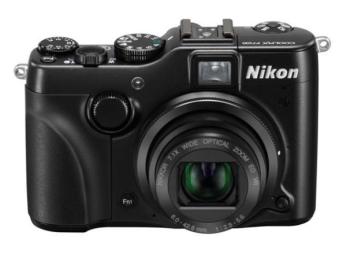
The Nikon Coolpix P7100 is outfitted with the same 10-megapixel
CCD sensor as its predecessor, but the sensor is now paired with the new
Expeed C2 image-processing engine. The 7.1X image-stabilized
optical-zoom lens provides a very usable 28-200mm focal range, with a
minimum aperture of F2.8 at wide-angle that stops down to F5.6 at full
telephoto.
An optional adapter ring and wide-angle converter lens broadens
the lens’s wide-angle field of view to 21mm. A mini-HDMI cable, a
wireless remote, and an external stereo microphone are also available
for the P7100. If the small built-in flash doesn’t meet your needs, the
P7100’s hotshoe can accommodate one of a number of Nikon Speedlights,
from the tiny SB-400 up to the new flagship SB-910.
The P7100 comes with enough internal memory to hold about 19
high-resolution JPEG images, and the camera is compatible with
SD/SDHC/SDXC cards. To squeeze the best performance out of the camera, a
high-speed card is recommended (I used an 8GB SanDisk SDHC Extreme Pro
UHS-1 card).
Despite its “compact” camera designation, the P7100 has some heft
and bulk to it. This model won’t fit into an average-size pocket, but
theoretically it can find a home in pockets that are larger--and
sturdier--than most. The camera measures 4.6 inches wide, 3.1 inches
tall, and 1.9 inches deep, and it weighs about 14 ounces with the
battery and media card.
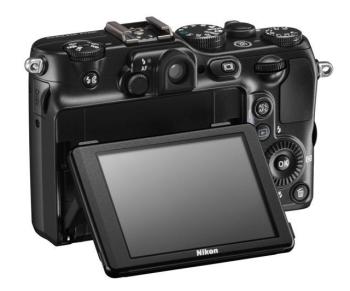
Perhaps the biggest design change is the camera’s new, fold-out
LCD. Although some people (including this reviewer) may prefer a
left-hinged articulated LCD, which folds into the camera body to protect
the screen, this tilting design is a welcome improvement over the
P7000’s fixed LCD viewfinder. The monitor quickly flips to a more
comfortable angle when you're shooting overhead or low to the ground,
and with its 921,000-dot resolution, the 3-inch LCD works well
regardless of lighting conditions. That’s a good thing, since the
P7100’s optical viewfinder--a rarity these days--is quite small and
provides only 80 percent coverage. Fortunately, the viewfinder is
bright, it's adjustable via a small diopter dial for those with
less-than-perfect vision, and it helps save battery life in a pinch.
Nikon has added a second sub-command dial to the front of the
camera, making it even more convenient to change settings quickly. In
manual exposure mode, for example, the front command dial adjusts
aperture settings while the rear dial changes the shutter speed; you can
swap the command-dial functions, if you desire. The forward-facing dial
is within easy reach and operates smoothly.
You'll find no lack of external controls on the P7100, but the
numerous dials and buttons spread out across the camera may be a little
intimidating. It’s best to read through the manual to get the lay of the
land. Delving into the manual and the camera’s controls is essential to
getting the most out of the P7100, especially with its many custom
options.
The quick-menu dial operates a little differently than most. It’s
positioned on the camera’s top plate, to the left of the hotshoe. Like a
mode dial, the quick menu provides access to a half-dozen individual
functions: Quality (which includes movie-setting options), ISO, White
Balance, Auto Bracketing, the customizable My Menu, and Picture Control.
You turn the dial to a specific parameter and press the dial’s center
button, and then the menu for that function appears on the LCD.
The dial is pretty stiff and difficult to turn, so it’s a little
less expedient than the more-common quick-menu control scheme, in which a
single button press opens a full list of functions. However, the
camera's dedicated exposure-compensation dial, which sits near the
shutter release, is a very useful option to have for fast adjustments. A
little extra coordination is needed to operate the P7100, as a number
of button-press/dial-turn combinations are required for you to change
settings. However, once you customize several buttons and dials,
including two function buttons and three user modes, you’ll rarely need
to go into the main menu. Just be prepared to page through a long list
of options in the Setup menu during the initial customization.
Shooting Modes and Features
At the expense of operational complexity, the P7100 excels at
offering photographers--especially pros who want a more-compact camera
to tote around--a feature-rich menu of options. Manual, semimanual, and
automatic exposure modes are available, along with a selection of scene
modes to fit almost any situation: portrait, landscape, sports, night
portrait, party/indoor, beach, snow, sunset, dusk/dawn, and other
presets. A Scene Auto Selector option analyzes the shot and
automatically switches to the most appropriate scene mode, which I found
to work especially well for macro shots.
Other useful features include a build-in neutral density filter,
distortion control, Active D-Lighting for maintaining shadow and
highlight detail in high-contrast shots, user-controllable noise
reduction, multiple white-balance settings and adjustments, bracketing
modes, a virtual level, and much, much more.
New to the P7100 are some special-effects modes that include
creative monochrome, cross-processing, sepia, soft, selective color, and
high- and low-key filters. The P7100 allows you to tweak and customize
most of these effects prior to shooting, providing a level of control
that most other cameras don’t offer. In cross-processing, for example,
you can select the hue and turn peripheral light intensity on or off.
Other noteworthy features include face detection, pet-portrait
auto release (sort of a face detection for pets), and panorama assist,
among others. Like the P7000, the new model is compatible with Eye-Fi
cards, but the P7100 adds a separate menu item to enable or disable
Eye-Fi upload to a computer.
The P7100 shoots good-looking video, but its maximum video
resolution of 720p is a bit disappointing given the range of
1080p-capable devices out today. In addition to 720p (1280 by 720)
recording at 24 frames per second, the P7100 shoots more Web-friendly
video at 30-fps settings (640 by 480 and 320 by 240).
You won't find a dedicated video button for quick operation, and
manual video controls are restricted as well. About all you can do is
set the white balance and focus prior to shooting, but the camera does
have a full-time autofocus option that’s useful when you're shooting
movies.
What’s more, the optical-zoom lens is operational during video
capture, and it does a great job, with slow, silent movement. Some great
audio options are in the mix, as well: You can turn the wind filter on
or off when using the internal stereo microphone, and you can attach an
external stereo microphone.
Performance, Image Quality, and Video Quality
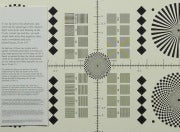
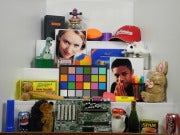 The
Coolpix P7100’s deep levels of control aren’t just for show, according
to PCWorld Labs subjective tests for image and video quality. The P7100
proved to be a top-notch performer, with one of the highest scores for
overall image quality of any camera we've tested in 2011.
The
Coolpix P7100’s deep levels of control aren’t just for show, according
to PCWorld Labs subjective tests for image and video quality. The P7100
proved to be a top-notch performer, with one of the highest scores for
overall image quality of any camera we've tested in 2011.
Exposure quality and color accuracy were especially strong, as the
P7100 earned scores of Superior in both those categories. Image
sharpness rated as Good, however, and distortion levels received a score
of Fair, so it’s nice to have those manual distortion-control settings
in the P7100’s laundry list of features.
In my hands-on tests, the P7100 certainly delivered great results
in terms of image quality. Although some people may prefer punchier
colors, the P7100 renders colors more naturally, with nice saturation.
Exposures are generally accurate, with perhaps a small tendency to
overexpose highlights in high-contrast shots.
The lens is excellent, providing sharp and well-detailed results.
But perhaps the most-noticeable image-quality improvement compared with
the P7000 is control over image noise.
I personally prefer to set
noise-reduction features off or to their lowest settings, and even with
minimal interference from the camera, the P7100’s noise levels are
noticeably better managed. Although the P7100’s 100-3200 native ISO can
expand to 12,800, you’ll get the best results--as expected--at 800 or
below. Shooting at ISO 1600 when necessary turns in perfectly acceptable
results.
When compared with the P7000, the new camera is definitely
snappier, especially when using a high speed SD Card. Autofocus is
responsive under bright and mid-light conditions; it’s a little less
predictable, although still relatively fast, in low-light conditions.
The camera doesn't have much shutter lag, which makes for pleasant
shooting. But the shot-to-shot time, especially when shooting RAW,
isn’t as speedy as I had hoped. Yes, it’s a little faster than the
P7000, but the P7100 isn’t going to win any speed races.
Burst shooting mode doesn’t improve things much: At full JPEG
resolution, the top speed is only about 1.2 frames per second, though
specifications indicate it will capture up to 90 frames continuously.
Write speed has improved, and you can continue shooting while the camera
is writing data to the card.
The P7100 captures good-looking video, albeit with the resolution
limitations I mentioned earlier. In PCWorld Labs subjective video tests,
the camera earned a video score of Very Good, and it’s one of the best
fixed-lens cameras we’ve ever seen in terms of low-light video
capabilities. Audio quality also rated as Very Good through the camera’s
on-board stereo microphone, and as I noted before, the P7100 has a
range of options for external mics.
As in the camera’s still images, colors in our sample video
footage were generally accurate and natural looking, even in low-light
situations. Full-time autofocus is recommended, and when it homes in on
the subject, it produces decently sharp footage. But full-time AF, as is
its nature, tends to search when changing angles or focal length, so be
prepared for some blur-to-focus movement.
Buying Advice
The Nikon P7100’s feature set is excellent, as is its image quality.
On its own, the P7100’s full complement of features and image quality
make this camera worthy of strong consideration for photographers who
want control over their picture-taking. It’s extremely powerful.
While we’d still like to see performance advances in shot-to-shot
times and video resolution, the P7100 is a big step forward from the
P7000. It’s definitely the best competitor we’ve seen for the Canon PowerShot G12,
but the G12 is likely to be a better fit for casual photographers. The
P7100's complexity means that it has a far more difficult learning curve
than most cameras do.
Source www.pcworld.com



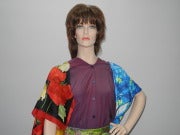



0 comments:
Post a Comment